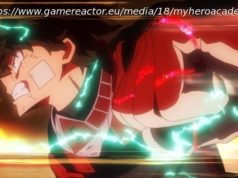There’s more to making the perfect Star Wars movie marathon than just collecting all of the movies. You also need to decide when to watch each of them. While some fans prefer episodic order and others favor the order they were released, let us propose an altogether different Star Wars viewing order.
The Star Wars franchise spans multiple generations across various media, from movies to video games, comic books, novels, and TV shows. Yet, despite that shared fondness for stories of the Jedi, the Sith, and the galactic adventures that unfold around them — which spawn an entire day of Star Wars events to enjoy each year on May 4 — there’s one thing Star Wars fans can never quite seem to reach a consensus on: The order in which to watch the films.
For those who aren’t aware, there are several fan-sanctioned ways to watch the Star Wars saga. (Warning: Multiple Star Wars spoilers ahead!)
Naturally, there’s a strong argument to be made for watching the movies in the order they were released in theaters — the “Production Order,” as it’s called. This means watching the original trilogy, beginning with Episode IV – A New Hope and on through The Empire Strikes Back and Return of the Jedi, before moving on to the prequel trilogy of Episode I – The Phantom Menace, Episode II – Attack of the Clones, and Episode III – Revenge of the Sith. Then, of course, it’s on to 2015’s Episode VII – The Force Awakens, 2016’s stand-alone prequel, Rogue One: A Star Wars Story, and then last year’s Episode VIII – The Last Jedi.
The primary benefit to this order is that you see the films as veteran fans experienced them, kicking things off on a high note with George Lucas’ adventure that started it all, before descending into the doldrums of his prequel series, only to rise up again with the three latest Disney adventures.
Yet, watching the films in this order also requires you to jump around the timeline quite a bit, making it feel less like a linear narrative and more like a batch of self-contained stories in a shared universe.
Of course, if you want that linear feel, there’s always the “Episode Order” for viewing the franchise. As the title implies, this order would have you watch each of the episodic chapters in order, starting with Episode I: The Phantom Menace, squeezing in Rogue One ’s breakaway Death Star adventure between Episode III and Episode IV, and then proceeding on in numerical order, concluding with the most recent installment, Episode VIII – The Last Jedi.
The benefits of this viewing order are pretty clear, in that you see the story of Star Wars unfold along the timeline crafted by Lucas and his successors at Lucasfilm. On the negative side, though, you’re kicking off your Star Wars experience with what’s arguably the worst film in the franchise, and transitioning from the sterile, CGI-infused environment of the prequel trilogy to the late-’70s and ‘80s visuals of the original trilogy, then back to the modern trilogy, can be frustratingly jarring.
This order also leaves what many consider the best movies in the series — Episode IV – A New Hope and Episode V – The Empire Strikes Back — stuck in the middle of the order when they should feel more climactic, and also reveals one of the biggest plot points in the series (the identity of Luke’s father) well before it happens in Empire .
So what’s a superfan to do if neither viewing order feels right?
Rod Hilton, a Colorado blogger and programmer, tackled this very question in a now-famous 2011 post that spawned a new viewing order that’s widely regarded as the most immersive, entertaining way to experience the Star Wars saga. It’s called “The Machete Order” — named after the title of his blog, Absolutely No Machete Juggling — and we think it makes for the coolest Star Wars experience.
The order he suggests, which predates the release of Episode VII and Rogue One, is this: Begin with Episode IV and Episode V. Then, fall back to Episode II and Episode III, which set up all the drama of Anakin turning into Darth Vader, before moving on to his redemption in Episode VI – Return of the Jedi. (Hilton leaves out Episode I for a very particular reason that we’ll describe in a moment.)
Hilton takes a deep dive into his reasons for the viewing order in a lengthy post, but it boils down to this: If the Star Wars saga is understood to be Luke Skywalker’s story, and the climax of the series centers on Luke’s belief that his father — one of the most powerful villains in the galaxy — can be redeemed (and in so doing, instill hope for the rest of the galaxy), then the viewing order should serve that theme in an intuitive way.
“Effectively, this order keeps the story Luke’s tale,” writes Hilton. “Just when our main man Luke is left with the burning question ‘did my father really become Darth Vader?’ we take an extended flashback to explain that it’s true. Once we understand how his father turned to the dark side, we go back to the main storyline and see how Luke is able to rescue him from it and salvage the good in him, which is the only way to destroy the Empire.”
It’s a convincing argument for a viewing order that envelopes the less warmly received chapters of the saga with some of its best, and organically weaves together the original trilogy and prequel films in the culmination of Luke and his father’s stories in Return of the Jedi.
As for why he recommends leaving out Episode I – The Phantom Menace, the easy answer is, it was pretty terrible. However, more precisely (and less controversially) it contributes little of substance to the franchise. The Phantom Menace is generally regarded as a conspicuous outlier in the series due to its use of Anakin and everyone’s favorite franchise punching bag, Jar-Jar Binks, as comedic elements, among other issues. One of the only widely agreed-upon positives in the film tends to be the debut of Sith Lord Darth Maul, whose violent death comes before the credits roll.
In addition, removing Episode I eliminates the weirdness introduced by the age difference between Anakin and his future bride, Padme. (Actors Jake Lloyd and Natalie Portman were ages 7 and 16, respectively, when the movie was filmed.) Finally, dropping the film lets Anakin and Luke enter the saga at similar points in their lives (essentially as whiny teens), each unaware of how their future will shape the galaxy. It’s a nice way to create a parallel that further blends the two characters’ arcs.
However, none of this addresses what to do with Episode VII – The Force Awakens, Rogue One: A Star Wars Story, and Episode VIII – The Last Jedi, which were all released after the creation of Hilton’s “Machete Order.” Luckily, we’ve solved this conundrum.
Narratively and tonally, it makes sense to add The Force Awakens and The Last Jedi after Return of the Jedi. Not only does Return of the Jedi merge Luke and Anakin’s stories, but it also features the darkest portrayal of Luke in the series to that point, so his disappearance in the time between Episode VI and Episode VII makes sense. Luke was still reeling from the events that led to his father’s death, and then had to contend with the betrayal of Kylo Ren to the dark side. That’s a lot to handle — even for a Jedi.
Concluding your viewing experience with The Last Jedi then serves the ultimate theme of the saga — Luke Skywalker’s evolution from farmboy to hero — by showcasing Luke’s final, noble act as the steward of the Jedi legacy.
Home
United States
USA — software You’re doing it wrong! Here’s the perfect way to watch every Star...






